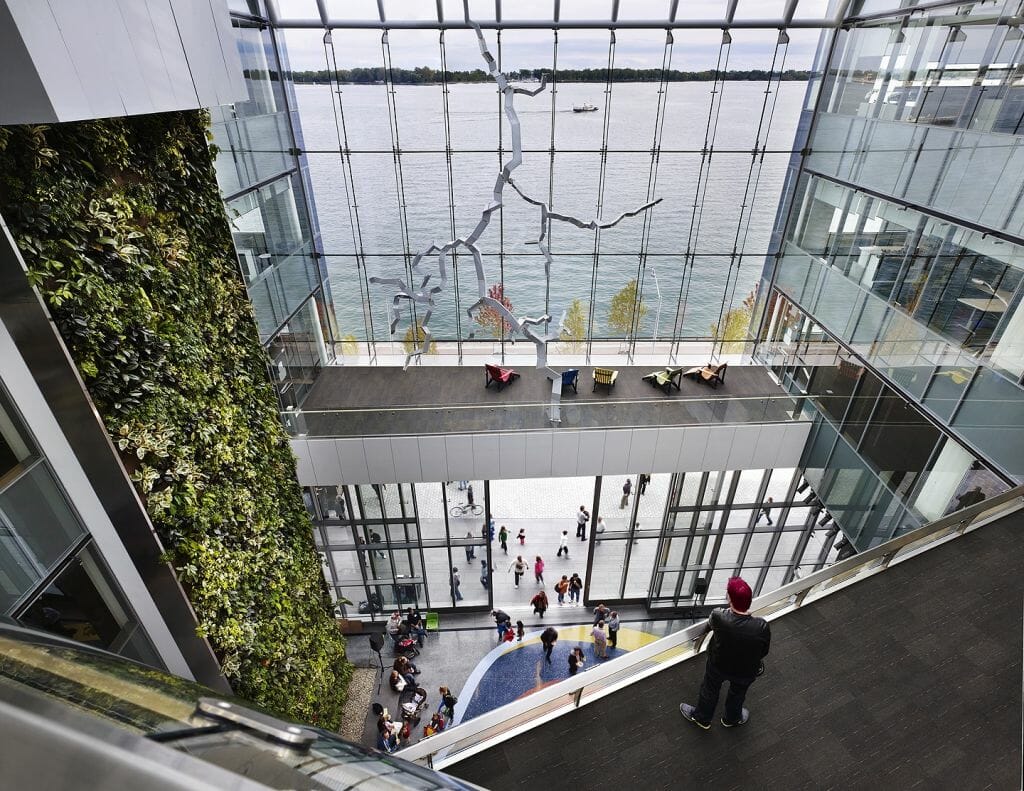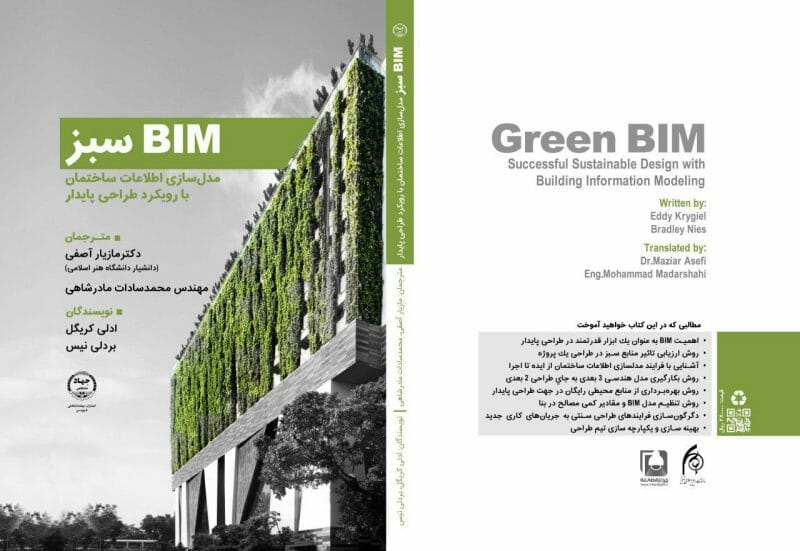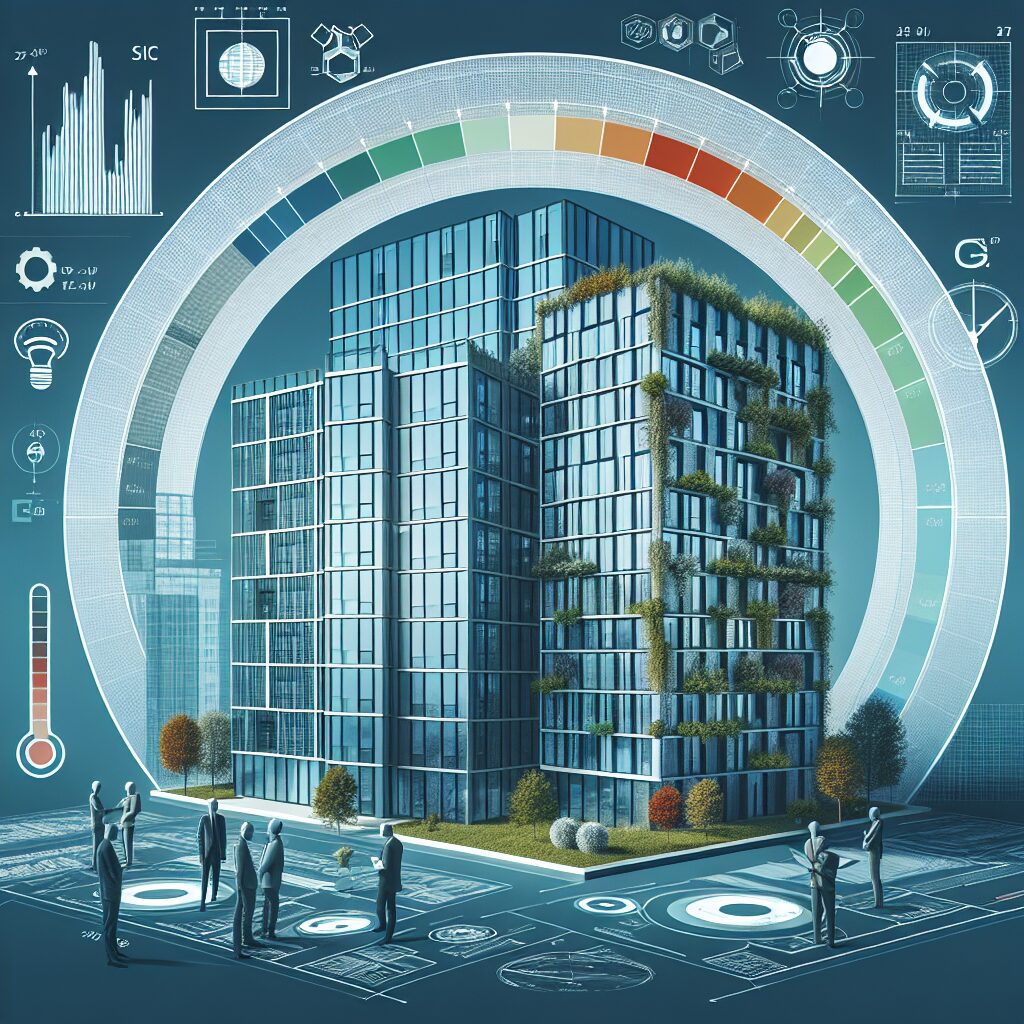به عنوان معماران و مهندسان عمران سعی در ایجاد ساختمان های بیشتر پایدار و دوستدار محیط زیست دارند، تمرکز بر روی بسته ساختمانی اهمیت بیشتری یافته است. بسته ساختمانی جداسازی فیزیکی بین محیط داخلی و خارجی یک ساختمان است و نقش بسیار حیاتی در کارایی انرژی، دوام و پایداری کلی دارد. در این مقاله، برخی از راه حل های نوآورانه بسته ساختمانی پایدار را بررسی خواهیم کرد که معماران و مهندسان عمران می توانند آنها را در طراحی های خود به کار بگیرند تا ساختمان هایی با محیط زیست دوست تر ایجاد کنند.
اهمیت پوسته ساختمانی پایدار
قبل از ورود به راه حل های خاص، ابتدا بیایید بحث کنیم که چرا بسته ساختمانی پایدار اینقدر مهم است. بسته ساختمانی مسئول کنترل جریان گرما، هوا و رطوبت به داخل یا بیرون یک ساختمان است. یک بسته ساختمانی پایدار و با طراحی خوب می تواند مصرف انرژی را به شدت کاهش دهد، کیفیت هوای داخلی را بهبود بخشد و کلیت راحتی و زندگی بهتری برای ساکنان ساختمان فراهم کند.
کارایی انرژی
یکی از فواید اصلی بسته ساختمانی پایدار، افزایش کارایی انرژی است. با کاهش حرارت از دست داده شده در زمستان و گرمایش در تابستان، ساختمان ها می توانند مصرف انرژی خود را برای گرما دادن و سرمایش کاهش دهند. این نه تنها هزینه های برقی را صرفه جویی می کند بلکه میزان انتشار کربن ساختمان را هم کاهش می دهد.
دوام نما
بسته های ساختمانی پایدار همچنین طراحی شده اند تا مقاومت و طول عمر بیشتری نسبت به مواد ساختمانی سنتی داشته باشند. با استفاده از مواد با کیفیت بالا و بیشتر دوستدار محیط زیست و تکنیک های ساخت و ساز، معماران و مهندسان عمران می توانند تضمین کنند که ساختمان هایشان تا زمانی که آزمایش مقاومت بکشند و نیاز کمتری به نگهداری در طول عمر خود دارند.
تأثیر زیست محیطی پوسته نما
علاوه بر کارایی انرژی و دوام، بسته های ساختمانی پایدار تأثیر مثبتی بر محیط زیست دارند. با کاهش مصرف انرژی و استفاده از مواد دوستدار محیط زیست، معماران و مهندسان عمران می توانند به کمینه کردن اثر کلی ساختمان بر محیط زیست کمک کنند و به یک آینده پایدارتر کمک کنند.
راه حل های بسته ساختمانی پایدار نوآورانه
حال که ما اهمیت بسته ساختمانی پایدار را متوجه شدیم، بیایید برخی از راه حل های نوآورانه را بررسی کنیم که معماران و مهندسان عمران می توانند در طراحی های خود به کار بگیرند.
سقف های سبز
سقف های سبز یا سبز زنده با نام دیگر، به عنوان یک راه حل بسته سازی ساختمانی پایدار روز به روز محبوب تر می شوند. با پوشش کامل یا بخشی از سقف با گیاهان، معماران و مهندسان عمران می توانند جذب گرما را کاهش دهند، عایق را بهبود بخشند و محیطی زیباتر ایجاد کنند.

پانل های خورشیدی
پانل های خورشیدی نحوه موثر دیگری برای ایجاد بسته سازی ساختمانی پایدار هستند. با بهره گیری از قدرت خورشید، ساختمان ها می توانند انرژی تجدیدپذیر خود را تولید کنند، مصرف خود از منابع انرژی سنتی را کاهش دهند و همچنین اثر کربنشان را کمتر کنند.
فرم های بتنی عایق شده (ICFs)
فرم های بتنی عایق شده یا ICFs، نوعی مواد ساختمانی هستند که قدرت بتن را با ویژگی های عایقی فوم ترکیب می کنند. با استفاده از ICFs در بسته ساختمانی، معماران و مهندسان عمران می توانند ساختمان های بسیار کارآمد انرژی و دوام بالا ایجاد کنند که نیاز کمتری به نگهداری دارند و عمر طولانی تری دارند.
پنجره های عملکرد بالا U-value
پنجره های عملکرد بالا برای کاهش انتقال گرما و استفاده حداکثری از نور طبیعی طراحی شده اند. با استفاده از پنجره های کارآمد انرژی در بسته ساختمانی، معماران و مهندسان عمران می توانند کارایی انرژی کلی ساختمان را بهبود ببخشند و همچنین راحتی و زندگی از داخل فضاها را افزایش دهند.

استراتژی های طراحی نمای پایدار
استراتژی های طراحی فعال، مانند جهت گیری، سایه اندازی و تهویه طبیعی، جزء مهمی از بسته ساختمانی پایدار هستند. با دقت در نظر گرفتن جهت گیری ساختمان، اضافه کردن عناصر سایه افکن، و بهره گیری حداکثری از تهویه طبیعی، معماران و مهندسان عمران می توانند مصرف انرژی ساختمان را کاهش داده و محیط داخلی را راحت تر کرد.
نتیجه
در نهایت، بسته های ساختمانی پایدار برای ایجاد ساختمان های پایدار و دوستدار محیط زیست بسیار حائز اهمیتند. با گنجاندن راه حل های نوآورانه مانند سقف های سبز، پانل های خورشیدی، فرم های بتنی عایق شده، پنجره های عملکرد بالا و استراتژی های طراحی فعال، معماران و مهندسان عمران می توانند ساختمان هایی طراحی کنند که نه تنها دوستدار محیط زیست باشند بلکه دوام، کارایی و راحتی برای ساکنان خود فراهم کنند.
سؤالات متداول در مورد راه حل های پوسته ساختمانی پایدار
### 1. چندین از مزایای استفاده از سقف های سبز در بسته های ساختمانی پایدار چیست؟
سقف های سبز می توانند کمک کنند به کاهش جذب گرما، بهبود عایق، ایجاد محیط زیباتر و ارائه محیط زیستی برای جانوران.
### 2. چطور پانل های خورشیدی به بسته های ساختمانی پایدار کمک می کنند؟
پانل های خورشیدی انرژی تجدیدپذیر تولید می کنند، مصرف ساختمان از منابع انرژی سنتی را کاهش می دهند و اثر کربن آنها را کمتر می کنند.
### 3. چرا فرم های بتنی عایق شده (ICFs) به عنوان یک راه حل بسته سازی ساختمانی پایدار در نظر گرفته می شوند؟
ICFs قدرت بتن را با ویژگی های عایقی فوم ترکیب می کنند، ساختمان های بسیار کارآمد انرژی و دوام بالا ایجاد می کنند که نیاز کمتری به نگهداری دارند و عمر طویل تری دارند.
### 4. چطور پنجره های عملکرد بالا کارایی انرژی ساختمان را ارتقاء می دهند؟
پنجره های عملکرد بالا انتقال گرما را کمینه می کنند و نور طبیعی را به حد اقصایی ممکن ارتقاء می دهند، مصرف انرژی ساختمان را کاهش داده و محیط داخلی را راحت تر می کنند.
### 5. چند نمونه از استراتژی های طراحی فعال برای بسته سازی ساختمانی پایدار چیستند؟
استراتژی های طراحی فعال شامل جهت گیری، سایه افکنی و تهویه طبیعی هستند که می توانند کمک کنند به کاهش مصرف انرژی و ایجاد محیط داخلی راحت تر.
Innovative Sustainable Building Envelope Solutions for Architects and Civil Engineers
As architects and civil engineers strive to create more sustainable and eco-friendly buildings, the focus on the building envelope has become increasingly important. The building envelope is the physical separator between the interior and exterior environments of a building, and plays a critical role in energy efficiency, durability, and overall sustainability. In this article, we will explore some innovative sustainable building envelope solutions that architects and civil engineers can incorporate into their designs to create more environmentally friendly buildings.
Importance of Sustainable Building Envelopes
Before we dive into specific solutions, let’s first discuss why sustainable building envelopes are so important. The building envelope is responsible for controlling the flow of heat, air, and moisture in and out of a building. A well-designed sustainable building envelope can significantly reduce energy consumption, improve indoor air quality, and enhance the overall comfort and livability of a building.
Energy Efficiency
One of the primary benefits of a sustainable building envelope is increased energy efficiency. By minimizing heat loss in the winter and heat gain in the summer, buildings can reduce their energy consumption for heating and cooling. This not only saves money on utility bills but also reduces the building’s carbon footprint.
Durability
Sustainable building envelopes are also designed to be more durable and long-lasting than traditional building materials. By using high-quality, eco-friendly materials and construction techniques, architects and civil engineers can ensure that their buildings will withstand the test of time and require less maintenance over their lifespan.
Environmental Impact
In addition to energy efficiency and durability, sustainable building envelopes also have a positive impact on the environment. By reducing energy consumption and using eco-friendly materials, architects and civil engineers can help minimize the building’s overall carbon footprint and contribute to a more sustainable future.
Innovative Sustainable Building Envelope Solutions
Now that we understand the importance of sustainable building envelopes, let’s explore some innovative solutions that architects and civil engineers can incorporate into their designs.
Green Roofs
Green roofs, also known as living roofs, are becoming increasingly popular as a sustainable building envelope solution. By covering all or part of the roof with vegetation, architects and civil engineers can reduce heat absorption, improve insulation, and create a more aesthetically pleasing environment.
Solar Panels
Solar panels are another effective way to create a sustainable building envelope. By harnessing the power of the sun, buildings can generate their own renewable energy, reducing their reliance on traditional energy sources and lowering their carbon footprint.
Insulated Concrete Forms (ICFs)
Insulated concrete forms, or ICFs, are a type of construction material that combines the strength of concrete with the insulation properties of foam. By using ICFs in the building envelope, architects and civil engineers can create highly energy-efficient and durable structures that require less maintenance and have a longer lifespan.
High-Performance Windows
High-performance windows are designed to minimize heat transfer and maximize natural light. By using energy-efficient windows in the building envelope, architects and civil engineers can improve the overall energy efficiency of the building while enhancing the comfort and livability of the interior spaces.
Passive Design Strategies
Passive design strategies, such as orientation, shading, and natural ventilation, are essential components of a sustainable building envelope. By carefully considering the building’s orientation, incorporating shading elements, and maximizing natural ventilation, architects and civil engineers can reduce the building’s energy consumption and create a more comfortable indoor environment.
Conclusion
In conclusion, sustainable building envelopes are essential for creating environmentally friendly and energy-efficient buildings. By incorporating innovative solutions such as green roofs, solar panels, insulated concrete forms, high-performance windows, and passive design strategies, architects and civil engineers can design buildings that are not only eco-friendly but also durable, efficient, and comfortable for their occupants.
FAQs on Sustainable Building Envelope Solutions
- What are some of the benefits of using green roofs in sustainable building envelopes?
Green roofs can help reduce heat absorption, improve insulation, create a more aesthetically pleasing environment, and provide habitat for wildlife.
2. How do solar panels contribute to sustainable building envelopes?
Solar panels generate renewable energy, reducing the building’s reliance on traditional energy sources and lowering its carbon footprint.
3. Why are insulated concrete forms (ICFs) considered a sustainable building envelope solution?
ICFs combine the strength of concrete with the insulation properties of foam, creating highly energy-efficient and durable structures with a longer lifespan.
4. How do high-performance windows improve the energy efficiency of a building?
High-performance windows minimize heat transfer and maximize natural light, reducing the building’s energy consumption and creating a more comfortable indoor environment.
5. What are some examples of passive design strategies for sustainable building envelopes?
Passive design strategies include orientation, shading, and natural ventilation, which can help reduce energy consumption and create a more comfortable indoor environment.






